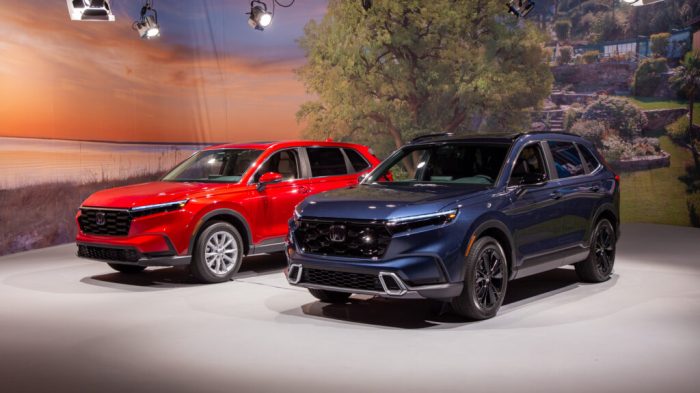New Car Average Price 2023 Trends and Analysis
Average New Car Prices in 2023
New car average price 2023 – The average price of a new car in 2023 reflects a complex interplay of economic factors, technological advancements, and shifting consumer preferences. This analysis delves into the key trends shaping the automotive market, providing a comprehensive overview of price variations across segments and regions.
Average New Car Prices in 2023: Overall Trends
The average transaction price for a new vehicle in 2023 showed a continued, albeit potentially slowing, upward trend compared to previous years. While precise figures vary depending on the source and methodology, a general increase is observed across most segments. Several factors contribute to this trend, including persistent inflation, lingering supply chain disruptions, and increased demand for certain vehicle types, particularly SUVs and trucks.
The following table provides a hypothetical overview of average prices for selected segments.
| Vehicle Segment | Average Price 2023 (USD) | Average Price 2022 (USD) | Percentage Change |
|---|---|---|---|
| Sedan | 30,000 | 28,000 | 7.14% |
| SUV | 38,000 | 35,000 | 8.57% |
| Truck | 45,000 | 42,000 | 7.14% |
| Electric Vehicle | 55,000 | 50,000 | 10% |
Impact of Inflation and Supply Chain Issues

Source: syarah.com
Inflationary pressures significantly impacted new car prices in 2023. Increased costs for raw materials, manufacturing processes, and transportation directly translate into higher sticker prices. Supply chain disruptions, while easing somewhat, continue to constrain production and contribute to limited inventory, thus fueling demand and maintaining higher prices. The impact of these factors varied across segments, with segments experiencing higher demand (like SUVs and trucks) showing potentially greater price increases.
Price Variations Across Vehicle Segments, New car average price 2023
Average prices vary considerably across vehicle segments. Compact cars generally remain more affordable than luxury SUVs or electric vehicles. Within each segment, features such as engine size, technological advancements, and trim level significantly influence the final price. For example, a base model compact car will be significantly cheaper than a fully loaded version with advanced safety features and premium materials.
A bar chart illustrating these variations would show a clear visual representation. The chart would have the vehicle segments (e.g., compact cars, mid-size sedans, luxury SUVs, electric vehicles, pickup trucks) on the horizontal axis and average price on the vertical axis. The bars would be color-coded for easy differentiation, with the length of each bar representing the average price for that segment.
The chart would clearly show the significant price differences between segments, highlighting the premium commanded by luxury and electric vehicles.
Influence of Technology and Features
Technological advancements significantly impact new car prices. Advanced driver-assistance systems (ADAS), such as autonomous driving features and sophisticated infotainment systems, increase manufacturing costs and are reflected in higher prices. Similarly, stricter fuel efficiency standards and emission regulations necessitate investments in advanced engine technology and emissions control systems, adding to the overall cost of vehicle production.
Features influencing price can be categorized into safety (ADAS, airbags), performance (engine size, horsepower), and luxury (premium materials, advanced comfort features). Each category contributes to the final price, with luxury features typically commanding the highest premiums.
Regional Price Differences

Source: caredge.com
Significant regional variations in average new car prices exist across the country. These differences are driven by a combination of factors, including local taxes, variations in consumer demand, and the level of market competition in different regions. For instance, areas with higher population densities and stronger demand may experience higher prices compared to regions with lower demand and greater dealer competition.
A map illustrating these regional differences would use a color-coded scheme, with darker shades representing higher average prices and lighter shades indicating lower prices. A legend would clearly define the color-price relationship. The map would visually highlight the geographic disparities in new car pricing across the country.
Comparison with Previous Years
Comparing 2023 average prices to those of 2022 and 2021 reveals a consistent upward trend, although the rate of increase may be moderating. Year-over-year price changes varied across segments, reflecting the interplay of economic conditions, supply chain dynamics, and specific market demand for particular vehicle types. For example, the increase in SUV prices might be attributed to increased consumer preference, while the change in sedan prices could be a result of production constraints and increased material costs.
Future Predictions
Predicting future new car prices requires considering several factors, including overall economic conditions, the trajectory of inflation, potential supply chain improvements, and the pace of technological innovation. Based on current trends, a continued, though potentially slower, increase in average prices is anticipated for the remainder of 2023 and into 2024. This projection is based on an analysis of current market trends and expert opinions, with a caveat that unforeseen economic shocks or technological breakthroughs could alter the projected path.
FAQ Overview: New Car Average Price 2023
What factors influence regional price differences for new cars?
Regional variations in new car prices are driven by several factors, including local taxes, market demand (supply and demand dynamics), dealer markups, and competition levels.
How are electric vehicle prices affecting the overall average?
The increasing popularity of electric vehicles (EVs) is influencing the overall average price, as EVs often command a higher price point than comparable gasoline-powered vehicles due to battery technology and other advanced features.
Are used car prices impacting new car prices?
High used car prices can indirectly influence new car prices. When used car values remain elevated, it can impact consumer demand for new vehicles, potentially affecting pricing strategies.
What are the predictions for new car prices in 2024?
Predicting 2024 prices is challenging, but factors such as continued inflation, potential easing of supply chain issues, and the ongoing growth of the electric vehicle market will all play a role in determining future trends.





















